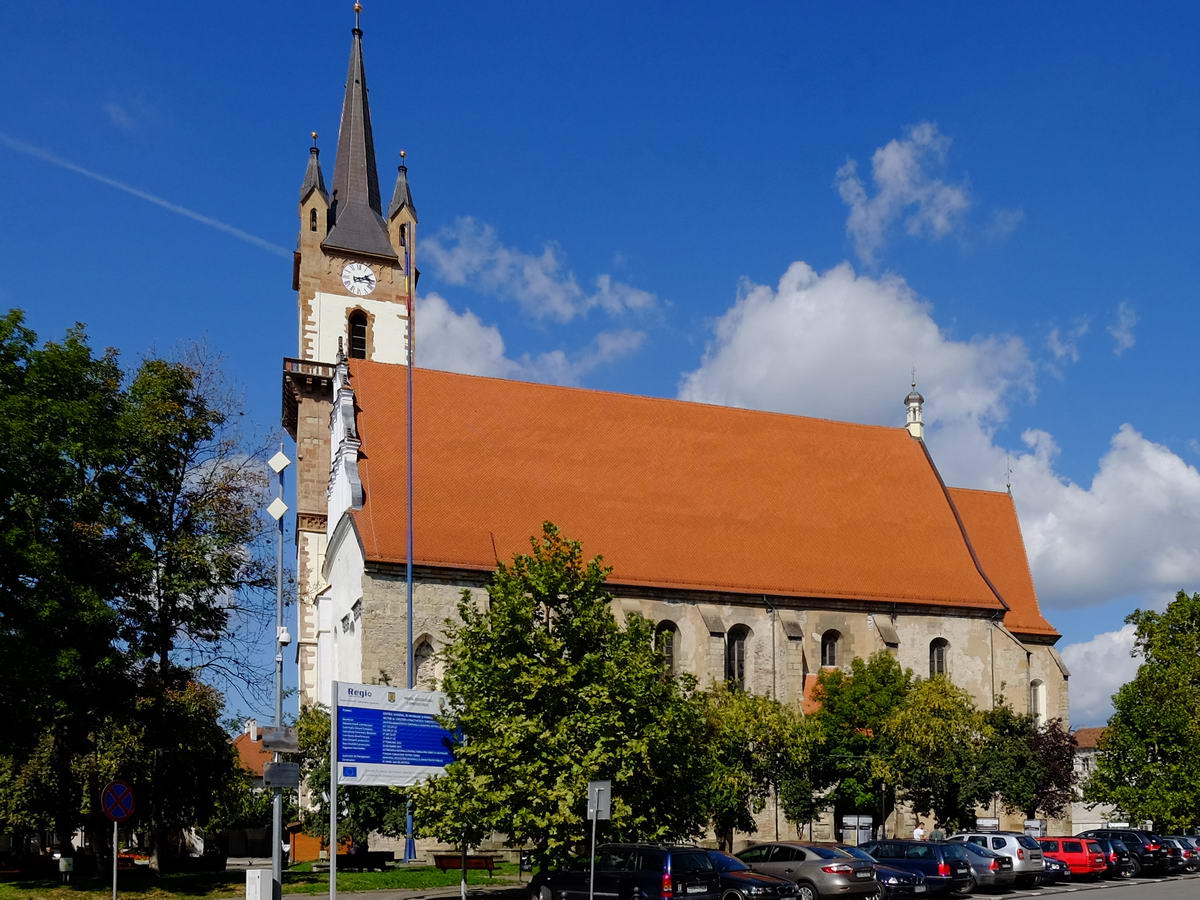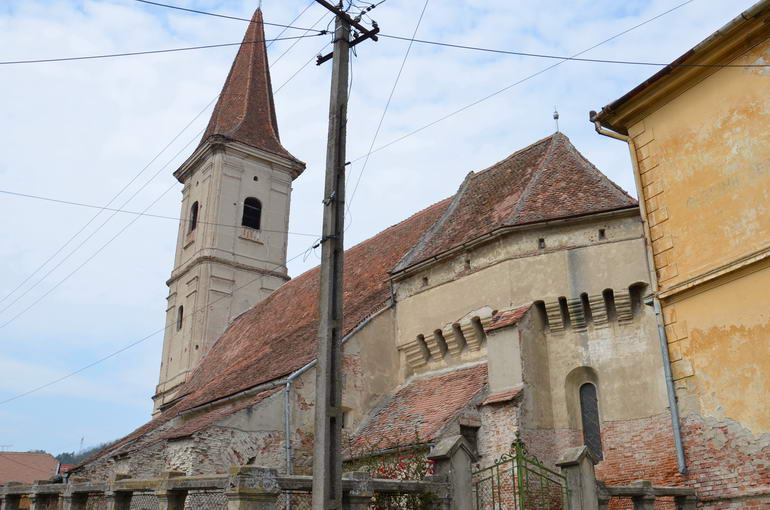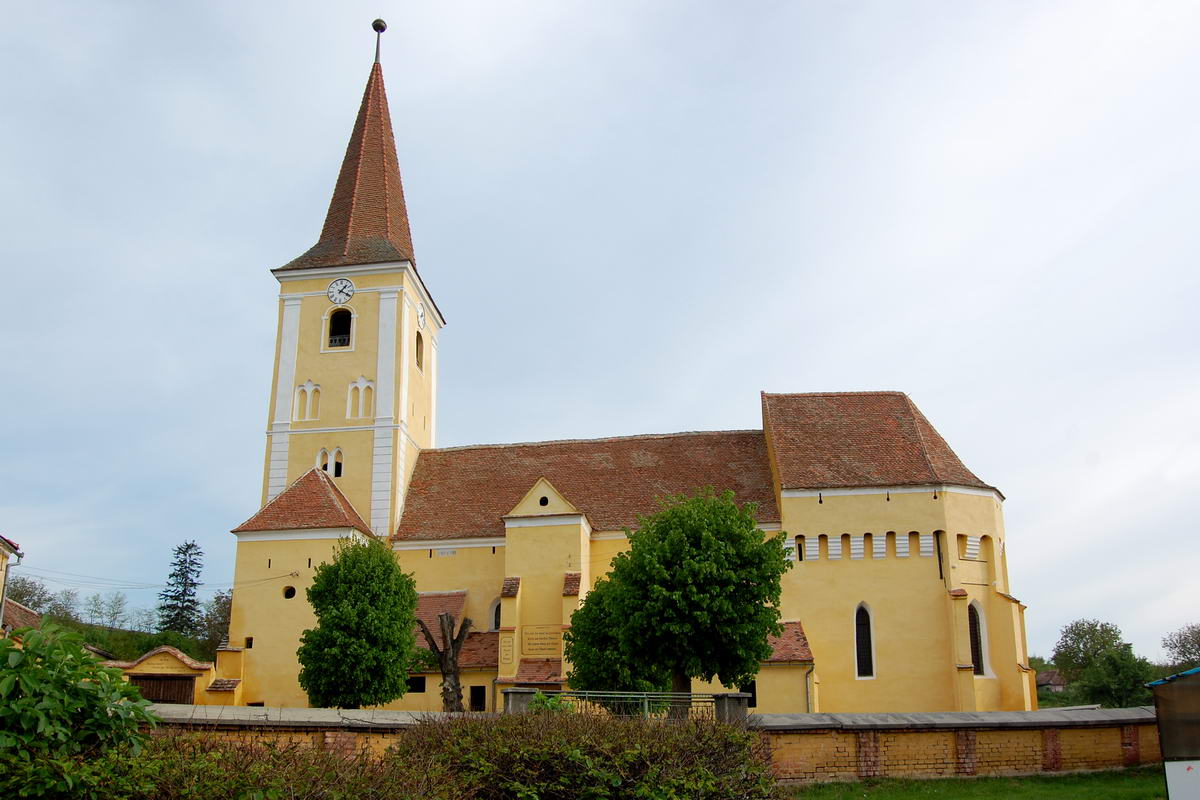
The church, which still preserves many parts of the former Romanesque basilica, was built during the 13th century and fortified in Gothic style in the 15th century. In the same time the Romanesque chancel was heightened by adding a defence level, a lierne vault was built above the nave and a ribbed vault in the chancel. During its fortification phase the side aisles of the western tower were replaced by turrets, which were demolished later on. Its defence level was also replaced in 1854 by the current spire.
The interior is decorated with lively colored galleries. The painted pews in the aisles were brought here for security reasons from the church in Drăuşeni. 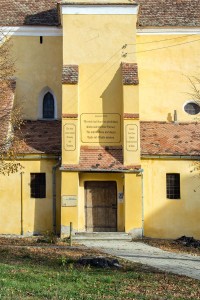 Almost nothing remained from the defence wall that was once surrounding the assembly.
Almost nothing remained from the defence wall that was once surrounding the assembly.
Place and surroundings
Şura Mare is counted as one of the oldest villages around Sibiu. Located in the so-called „Old Land“ and founded between 1142 and 1162, it has a similar respectable age as the town of Sibiu. The many centuries imprinted on the houses and on the fortified church are not the only aspect that this village can be proud of. It is also the place where great personalities that shaped the history of Transylvania and of Romania were born or exerted their professions. Friedrich Teutsch was a priest in the village between 1896 and 1903, three years later being appointed bishop of the Evangelic Church of Romania.
Johann Haupt, the son of a poor peasant from Cincu, through his diligence and skill, manages to be promoted to the highest position in the administration of the Saxon: first a judge of the 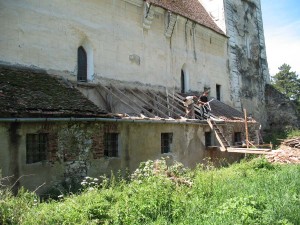 Court of Sibiu (administrative unit of Medieval Transylvania), then mayor for seven years in Șura Mare and finally a royal magistrate (chief administrator of the Saxon county).
Court of Sibiu (administrative unit of Medieval Transylvania), then mayor for seven years in Șura Mare and finally a royal magistrate (chief administrator of the Saxon county).
Contact:
Ev.Parish Sibiu
Tel.:+40/269/212 600



